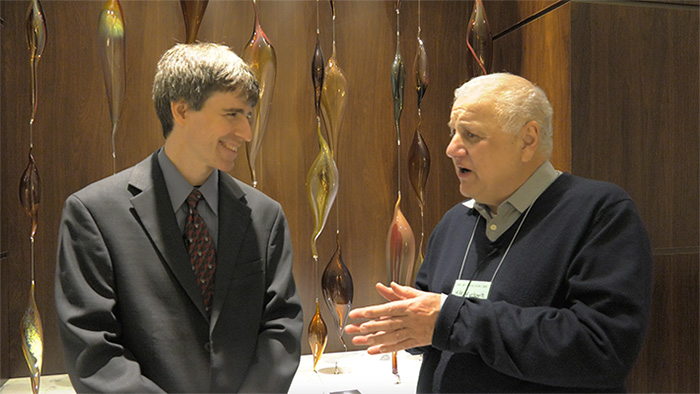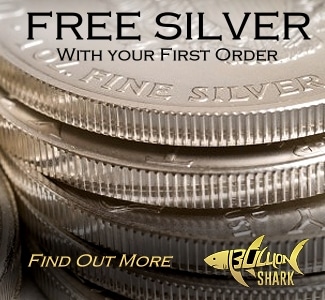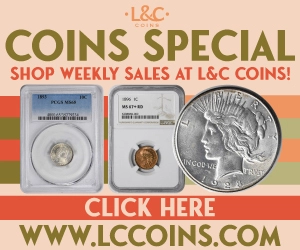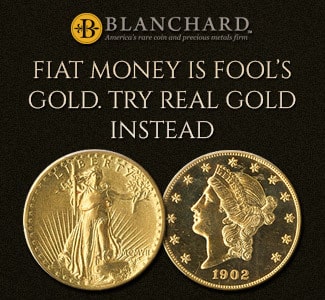
By CoinWeek ….
Earlier this year, Charles teamed up with CoinWeek’s resident Ancient Coin expert Mike Markowitz to check out the New York International Numismatic Convention (NYINC). Among the many dealers and collectors we spoke to, Mike caught up with NGC Ancients director and grading finalizer David Vagi, for whom Mike offers effulgent praise indeed.
In the following transcription of that interview, Mike asks David about what a grade means on an ancient coin, what the future holds for ancient coin collecting, and what does David have to say about those who think slabbing ancients is anathema to to the hobby…
* * *
Mike Markowitz: We’re talking today with David Vagi of Numismatic Guaranty Corporation. David’s book on the history and coinage of the Roman Empire (Coinage and History of the Roman Empire, 2001) is a standard reference and a book I’ve found essential in my own work. So for me it’s a special honor to be talking to probably one of the most distinguished young numismatists of our generation. To begin with, could I ask you to talk a little bit about how you first got interested in coins
David Vagi: Oh, that’s a mystery… For some reason one day I just started liking coins? I found one in the street, maybe that had something to do with it? An old mercury head dime. I have no idea what got it started, but once I had an interest there was truly no going back.
MM: You deserve much of the credit for establishing a new standard for the encapsulation of ancient coins. This is something that many older collectors feel is putting the coin into a plastic prison, where it will be beating its little head against the transparency and screaming “Let me out”. For younger collectors who are familiar with encapsulated American coins, the slabbing of an ancient coin makes it somehow a little bit more reassuring as a collectible. Could you talk a little bit about what went into this very creative solution that you found for encapsulating these very resistant and problematic objects?
DV: Yeah, this was a very thorny issue, especially in the early years. We’re now about nine years into it, so we’ve come a very long way in terms of getting all the procedures perfected and collector acceptance. And it was very interesting in the beginning, because we had to first of all get a holder that was large enough at least to accommodate a Syracuse dekadrachm, and yet also…
MM: That’s a coin about 35 mm across…
DV: Yeah. It’s like taking…
MM: …and 42 grams, or something like that.
DV: Yeah, it’s like taking three silver dollars and stacking them together. So it’s a big coin. And then also you have very, very small coins – sometimes so small that you really… it’s difficult to handle them. So that was a big issue. And then you have to figure out how you’re going to evaluate these coins. And so I actually came up with a grading system, which we use, which you have a grade for wear, or the lack thereof, but also we separate…
MM: That’s what you call “surface”?
 DV: That’s just the grade. But then we separately analyze strike and surface, and we give them a rating. So it really gives a person a picture of the whole coin, how to… really what to expect about this coin. You know, it might be very high grade but a terrible surface, and we can actually express that through this system. Or if it’s just wonderful on all levels, you know, we can make that clear as well. So it’s a very flexible and accurate system, and it has received pretty good… pretty good response from collectors in general because they can understand it.
DV: That’s just the grade. But then we separately analyze strike and surface, and we give them a rating. So it really gives a person a picture of the whole coin, how to… really what to expect about this coin. You know, it might be very high grade but a terrible surface, and we can actually express that through this system. Or if it’s just wonderful on all levels, you know, we can make that clear as well. So it’s a very flexible and accurate system, and it has received pretty good… pretty good response from collectors in general because they can understand it.
And there was an extreme resistance, obviously, to trying to capture all these different elements and narrow… boil it down into a single grade. And although we do that sometimes for lower-price coins that it just makes more sense to do that, for better coins, you know, we’re happy to use that system, and it’s working very, very well.
MM: Unlike modern, machine-made coins, every ancient coin is a unique, handmade artifact.
DV: Correct.
MM: And the grading of these artifacts necessarily involves a certain amount of subjectivity.
DV: Yes.
MM: Are you the only person that does the grading? Or have you trained acolytes and minions to your standard?
DV: Well, it’s very much a team effort. In the end I have to finalize every coin, but I rely on input from two or three other staff members and we really work together and, you know, if I’m sort of the minority view on it–either I think it’s something nicer or lesser than other people do, you know–I’m open to their ideas on it. But in the end I have to finalize each coin. And it is… some aspects are highly subjective.
MM: But before it goes out the door, you see it.
DV: Yes. And I sign off on every coin.
MM: Can you say approximately how many ancient coins you’ve encapsulated in these nine years? Rough estimate?
DV: Many hundreds of thousands.
MM: Hundreds of thousands?
DV: I think, yeah. So, we get a lot of coins sent in, and it’s been very active and growing immensely.
MM: I see in some of the major auctions, virtually every [ancient] coin that’s in the catalogue has been encapsulated by NGC.
DV: Right.
MM: And several of the large auction companies now seem to be doing that as a matter of course – even what would appear to be fairly low-value pieces.
DV: Right, yeah.
MM: Can you say what the most valuable coin you’ve ever encapsulated might be?
DV: Well, the most valuable coin we’ve ever graded sold for $2 million…
MM: What was that?
DV: That was a sestertius of Hadrian struck by dies engrave by the Alphaeus master, so it’s a really fantastic coin.
MM: As I recall, that was a coin that set a record for a bronze ancient coin.

DV: And it did back when it sold in the Hunt sale before then, prior to that… It’s a coin that, like a medallion of sorts, that has always brought extraordinary money. So that’s the most valuable. And then, we do coins that are certainly less than $20 dollars each, as well, sometimes.
MM: That low?
DV: Oh yeah. Yeah. Because, what you’ll find is that when you have… In fact, one of the very first things that struck me was what having a coin encapsulated does – even for a low-value coin. It somehow… it makes it presentable to a much wider audience, and this is what – so you could have a coin, believe it or not, that someone might be able to acquire for $20 in quantity, and it’s actually worth putting in a holder, because it broadens the audience and it actually, I don’t know how to describe it… it actually creates a whole new product, I don’t even… I don’t even know fully how to describe it, but it really transforms it. If you picture, you know, a low-value coin sort of in a holder, like a plastic holder with scribbled writing on it, and it just, it looks like something that would be very hard to interest someone not involved in numismatics into even thinking it’s real or even wanting to acquire it. Whereas, when you get something like this, it’s literally–it’s just more tangible. And, you know, the way I think of it, some people might call it like imprisoning a coin, and I understand that. But I look at it as building museums one coin at a time, that’s sort of how I think of it. Because each capsule, to me, is a single museum dedicated to this coin. If you go to a museum, what do you see? You see plexiglass or something in front of you. Behind that you see the object, and a label that describes the object.
MM: Which is usually incorrect.
DV: Quite often. But that’s essentially what we have here, but it’s… it can fit in your hand. So it’s kind of like a single museum for each coin. And I think of it in those terms, and I think a lot of collectors, you know, respond to that. Because it’s a way of getting their little treasure the kind of, almost a museum-style treatment.
MM: An ancient coin is a little bit like a dog in one respect, in that the better the pedigree, the higher the price…
DV: Yes.
MM: …is likely to be. When a coin comes with a lot of information about famous collections it’s been in, are you able to capture that on the label?
DV: Not entirely. So if it has a long pedigree, we have a limited amount of space on the label. However, we can typically capture two pedigrees – you know, the two most important pedigrees? And then the rest of the information can be, you know, preserved by the collector or the dealer on a separate piece of paper. But we can at least capture, you know, the two most important pedigrees.
MM: As a collector of Byzantine coins, I just noticed in the show that you have a new label for Byzantine coins with an image of Christ Pantocrator…
DV: Right.
MM: …Which is an iconic Byzantine icon.
DV: [smiling] Yes.
MM: And I thought that was a really nice touch in distinguishing what there’s probably only a few hundred serious collectors of.
DV: Right.
MM: But…
DV: Well this is a perfect example. We have that for gold coins and for bronze coins, we have two separate labels. And what these are… See, one of the things that we really are doing well is expanding the market substantially. So there are a great many people who are not traditional collectors of ancient coins who are becoming interested in it as a result. Because they feel more confident, even on their initial purchase. And on continuing to participate. I mean, there are…
Charles Morgan: It’s like the holder adds an element of uniformity.
DV: Right. It helps.
CM: So you take an item that is, by its own nature, unique, and you create a uniformity. So you could have multiple ancient coins from different periods and different rulers…

DV: Right, but there’s a uniformity in the presentation and, you know, I often think: Was I insane when I bought my first ancient coin? [Mike and David laugh] You know, here I am, a college kid and, you know, I have other things to spend money on. I go to a coin show and buy a coin, write a check, and… what was I thinking? How did I know it was real? How did I know it was what the person was describing it to be? And, you know, the point is, I made that leap because, for some reason, I’m quite dedicated to it. But to get people who are maybe not quite that dedicated or insane or confident or whatever you want to describe it as [laughs], to get them to enjoy this field, the encapsulation, and the third-party grading, has made great strides. Because it has really lowered the barrier of entry. And, you know, this is wonderful for a lot of people, and it’s also offensive to other people who feel somehow that their hobby should remain some privileged, you know, area that only diehards should be able to enjoy. You know, that somehow you have to suffer to enjoy the field. And we just couldn’t disagree more. We feel that anything that can be done to make these coins more accessible, and to broaden the market and increase the confidence and the transparency in the market–anything that can be done to make collecting easier–that’s what we’re doing. And so, the natural resistance we get from some small quarter is to be expected. But it’s driven largely by fear, and we’re trying to… we’re just trying to remove that level of resistance for first-time buyers, because first-time buyers can become repeat buyers and serious collectors.
CM: Let me interject one question. You talk about how encapsulation sort of lowers the barrier of entry or at least eases the learning curve a little. But that does not necessarily mean that for a grader the learning curve is diminished.
DV: Correct.
CM: So, you can get boxes of random ancient coins from…
DV: Yes.
CM: …over different areas of interest, some that are more or less researched. How difficult is it on your end to be able to appropriately identify and…
DV: Classify.
CM: …classify, grade…
MM: Attribute.
CM: …and ensure as much as you can authenticity?
DV: Yeah, well this of course, all of these things you bring up, are the big challenges and the big time consumers in terms of what we do. Some coins, you know, the vast majority we have enough experience we know, between myself and my main colleague, Barry, we probably have 60 combined years experience. We both turn 50 this year, so [laughs] we have a lot of direct, hands-on experience and, you know, we were brought into the market at a time when it was very, very hands on. Now it’s becoming more… more internet-oriented?
MM: Digital.
DV: Digital! It’s digital and virtual. So we were trained, to get back to what you [Charles] were asking, we were trained hands on. And so, you know, we bring that to the table. And were in the process of training two other people at this point, we’re looking for more…
MM: What background would you be looking for? Art History? Archaeology? Classics?
DV: Passion. That would be the background. You have to love these coins. You have to love Greek and Roman History. Because if you don’t you will become bored quickly. You know, I have a degree, one of my degrees is in History. But the value of that degree in terms of what I do on a daily basis is negligible. You know, you learn handling the coins, reading, lots of supplementary reading… So, someone can be trained. I would rather have someone who is committed and passionate about it and has basically a good eye, you know, for detail – that person can be trained. Someone who’s perhaps a PhD candidate but just somehow lacks the ability to assess what they’re seeing, all the education in the world won’t help, so…
MM: Before we wrap up, are there any questions you wish I would’ve asked you that you would like to share with the ancients numismatic community?
DV: That’s a good question. Well, I think maybe the, you know, the one thing I think of strongly about this is, and I come back to it, we are creating individual handheld museums for coins. We really are. And it’s, I… we are seeing a shift in people’s’ attitudes toward it, you know, a resistance. Because they can’t, you know, whenever things change in the world, you know, there’s always some resistance. But now we are seeing what I would describe as a serious bleeding of intellectual capacity in the field. We have a lot of people who are retiring, or nearing retirement, who were the people who we learned under. They’re going. And there isn’t a lot of well-trained collectors or dealers out there to replace them. And, you know, this is just a reality.
So with NGC, hopefully what we’re going to be bringing to the market is some kind of stability for, especially for the long term. Because the long term, you know, the training field, the coin shows of the world, it’s becoming a much more narrow activity. More things are going to auction, more things are being purchased at an arm’s length online, and the physical connection between the coin and the person is being reduced somewhat. And as the, all of the giants of the field retire and go on their merry way, there’s very little to replace that. So hopefully NGC will continue to maintain its position and increase it to where we can actually provide the stability that this field is gonna need. Because I… otherwise, it’s gonna be a very interesting situation.
MM: Thank you! Thank you very much!
DV: And I hope that’s our contribution.
CM: Thanks. Thanks, David.
DV: Thank you.
* * *
For more information about how ancient coins are graded, here is a video featuring an earlier interview with David Vagi:




